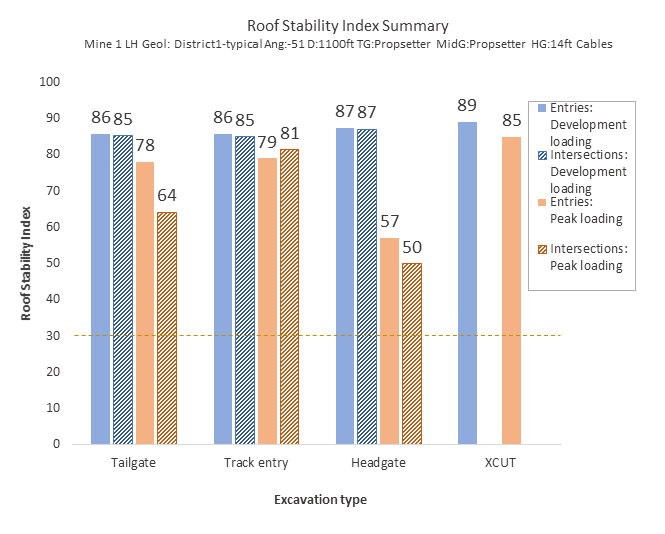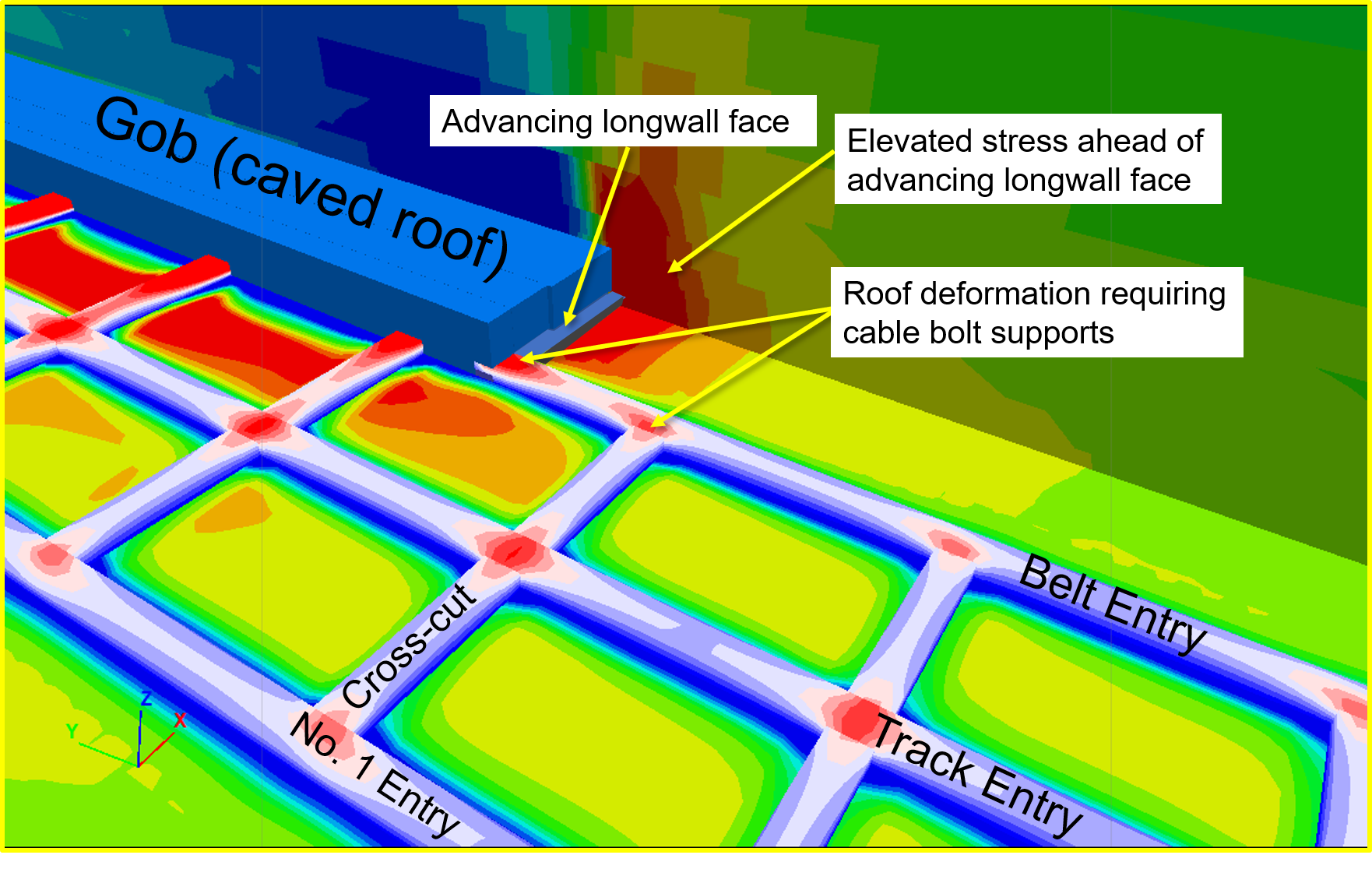Mining Project: Design Procedures for Gateroad Ground Control
| Principal Investigator |
|
|---|---|
| Start Date | 10/1/2014 |
| End Date | 9/30/2019 |
| Objective |
To develop engineering-based procedures that will contribute to the practical design of ground control systems in gateroad excavations and longwall extractions. |
| Topic Area |
Research Summary
Underground coal miners working in longwall mines face hazards from major roof collapses that can block necessary escape routes and ventilation airways, and from injuries from falls of smaller volumes of rock and coal. The blockage of ventilation airways has the potential to lead to gob combustion, an extremely hazardous and unacceptable outcome.
To reduce these hazards, this project had three research aims, as follows:
- Quantify rock-support interaction in gateroads subject to longwall loading.
- Identify critical parameters affecting gateroad stability.
- Develop and test practical design procedures for gateroad ground control.
This project produced engineering-based procedures that can be used in the practical design of ground control systems in gateroad excavations and longwall extractions. The design procedures were developed through an extensive program of monitoring rock-mass and support response in operating longwall mines, numerical modeling analysis, statistical analysis, and development of support system assessment procedures. Application of these procedures will help to reduce the quantity and severity of ground instabilities due to longwall extraction.
The research approach included in-mine monitoring studies, laboratory testing to quantify rock properties, full-scale support testing to characterize current and new standing support systems, numerical analysis of rock-support interaction under longwall induced loading conditions (Figure 1), analysis of support alternatives, and finally the development of support assessment procedures that can assist in the practical design of gateroad support systems.
Several in-mine monitoring studies to measure ground and support system responses were completed at collaborating mines in West Virginia, Pennsylvania, Alabama, Virginia, Wyoming, and Utah. Data from these study sites were used to better understand the mechanics of ground stress, deformation of gateroads, and the contribution of different support types to overall stability.

Figure 2. Support assessment chart indicating expected stability of various gateroad entries and crosscuts under development and longwall loading conditions. Click for larger image.
The results formed the basis for developing engineering-based procedures for analyzing various gateroad ground control options. Figure 2 shows how the research outcomes were used to assess the likely stability of gateroad entries under development and longwall loading conditions. Charts such as these can be produced for different geological scenarios, stress conditions, depths of cover, and combinations of support systems.
The impact of the developed design and analysis procedures will be a reduction in the frequency and severity of injuries due to longwall gateroad instabilities. The level of reduction in injuries will vary by mining conditions, but in many cases the resulting longwall gateroad stability will eliminate the disruption to the ventilation system.
Related Publications
A case study of the stability of a non-typical bleeder entry system at a U.S. longwall mine
Overview of current US longwall gateroad support practices: an update
Evaluation of stress-control layout at the Subtropolis Mine, Petersburg, Ohio
Calibration of coal-mass model in a longwall mine: a case study
- 60 Years of Rockbursting in the Coeur D'Alene District of Northern Idaho, USA: Lessons Learned and Remaining Issues
- Comparison of Ground Conditions and Ground Control Practices in the United States and Australia
- Determination of In Situ Deformation Modulus for Cemented Rockfill
- Dynamic Failure in Deep Coal: Recent Trends and a Path Forward
- Numerical Model Calibration for Simulating Coal Pillars, Gob and Overburden Response
